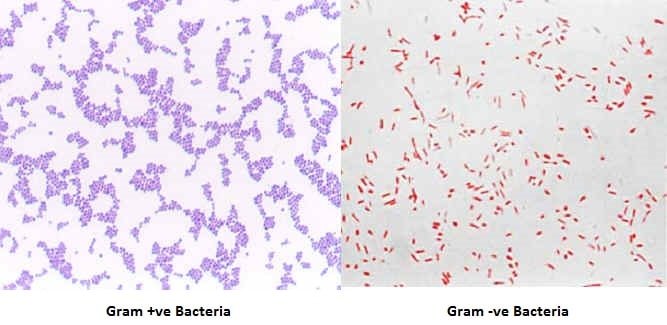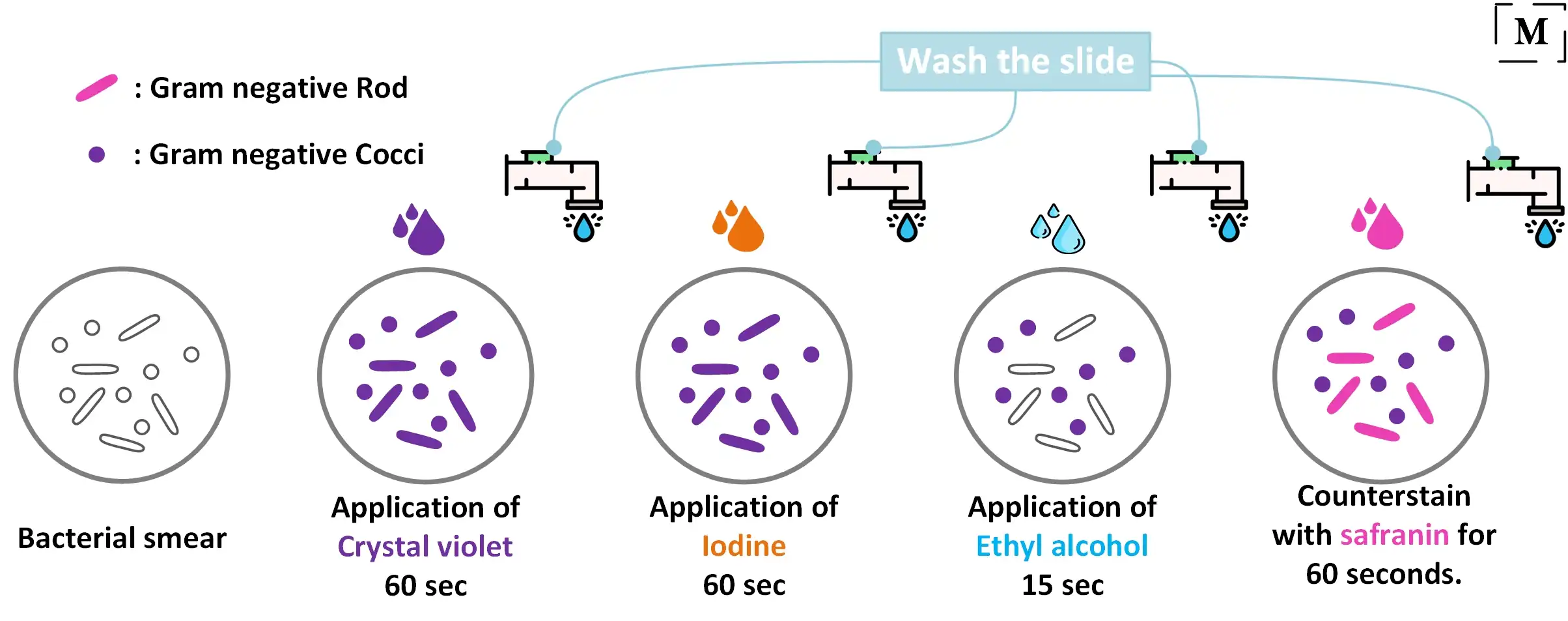Explain How Gram Stain Is Different From Simple Stain
It was developed by Danish microbiologist Hans Christian Gram in 1884 as an effective method to distinguish between bacteria with different types of cell walls and even today it remains one of the most frequently used staining techniques. Fig 52 The differences in staining responses to the Gram stain can be related to chemical and physical difference of cell walls.
What Is The Difference Between Gram Stain And Acid Fast Pediaa Com
Bacterial cell walls are different from the cell walls of plants and fungi which are.

. The methylene blue stain is an example of a simple stain since it uses only one dye. Heres why knowing whether the. Although most rashes are transient and benign some require additional work-up.
The two most widely used differential stains are the Gram stain and Acid fast. The Gram stain is a differential stain which permits the viewer to distinguish between gram-positive and gram-negative bacteria. This layer of polysaccharide sometimes proteins protects the bacterial cell and is often associated with pathogenic bacteria because it serves as a barrier against phagocytosis by.
Parents and carers have the right to be involved in planning and making decisions about their babys health and care and to be given information and support to enable them to do this as set out in the NHS Constitution and summarised in NICEs information on making decisions about your care. Gram-positive bacteria are bacteria with thick cell walls. LPS can be toxic to a host and can stimulate the hosts immune system.
The gram stain was devised by histologist Christian Gram as a. Explain the difference between a positive stain and a negative stain. Cryptococcus are observed as Gram positive yeasts.
Gram positive bacteria lack this layer. All of the following are used to identify a particular species of bacteria except. They are characterized by their cell envelopes which are composed of a thin peptidoglycan cell wall sandwiched between an inner cytoplasmic cell membrane and a bacterial outer membrane.
The Gram stain procedure is a differential staining procedure that involves multiple steps. Rapid Gram stain refers to quickened technique where the smear is exposed to only 30 seconds instead of one minute. The difference is clear but in simple explanation gram staining is what makes bacteria to be gram positive or negative and this happens because gram positive bacteria have thick peptidoglycan which retains crystal violet staining dye as opposed to gram.
In a Gram stain test these organisms yield a positive result. Explain the difference between a positive stain and a negative stain. The Gram stain procedure is a differential staining procedure that involves multiple steps.
Gram-negative bacteria are bacteria that do not retain the crystal violet stain used in the Gram staining method of bacterial differentiation. Rashes are extremely common in newborns and can be a significant source of parental concern. Safranin is the most common counter stain which colours Gram negative bacteria pink to red and leaves Gram positive bacteria dark purple.
It was developed by Danish microbiologist Hans Christian Gram in 1884 as an effective method to distinguish between. Explain the difference between simple and differential staining. Gram-negative bacteria are found in virtually all.
Making decisions using NICE guidelines explains how we use. October 17 2019 at 1138 AM. Finally smear is counter-stained with a simple basic dye different in color from Crystal violet.
It was developed by Danish microbiologist Hans Christian Gram in 1884 as an effective method to distinguish between. The Gram stain procedure is a differential staining procedure that involves multiple steps. LPS can be toxic to a host and can stimulate the hosts immune system.
Explain the difference between simple and differential staining. What is the reason that inhibition by basic. Gram-negative cocci and Gram-negative bacilli.
Some organisms are best identified by stains other than the Gram stain particularly mycobacteria or Nocardia which show acid fastness on ZiehlNeelsen or similar stains. Ability to transfer genetic information. Other organisms may need to be identified by their growth in.
Half-Gram stain refers to modified staining technique where the smear is neither decolorized nor counterstained. The flagellar stain is considered to be a special stain. It is useful to stain a known Gram positive bacterium.
The steps of the Gram stain.

Gram Staining Principle Procedure Interpretation Examples And Animation

Gram Staining Better Understanding Of The Procedure And Easy Interpretation Of The Results


No comments for "Explain How Gram Stain Is Different From Simple Stain"
Post a Comment